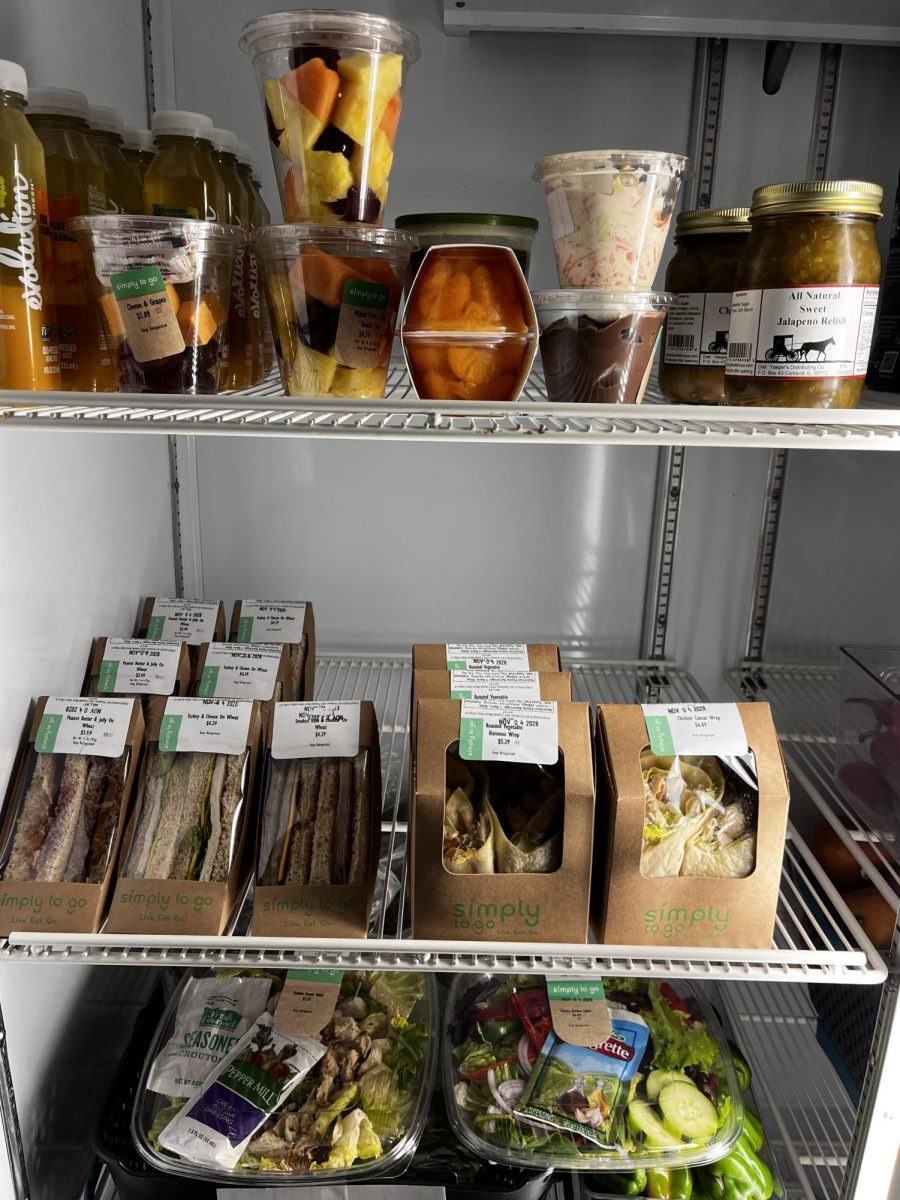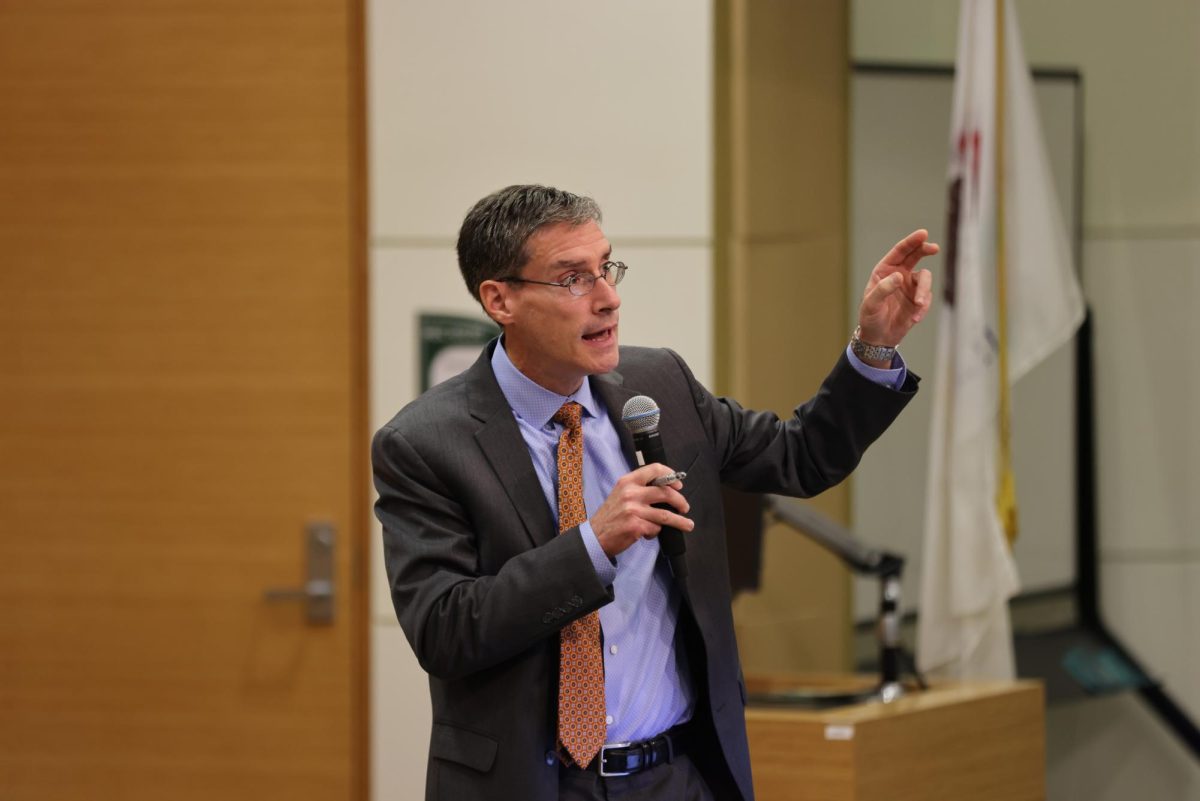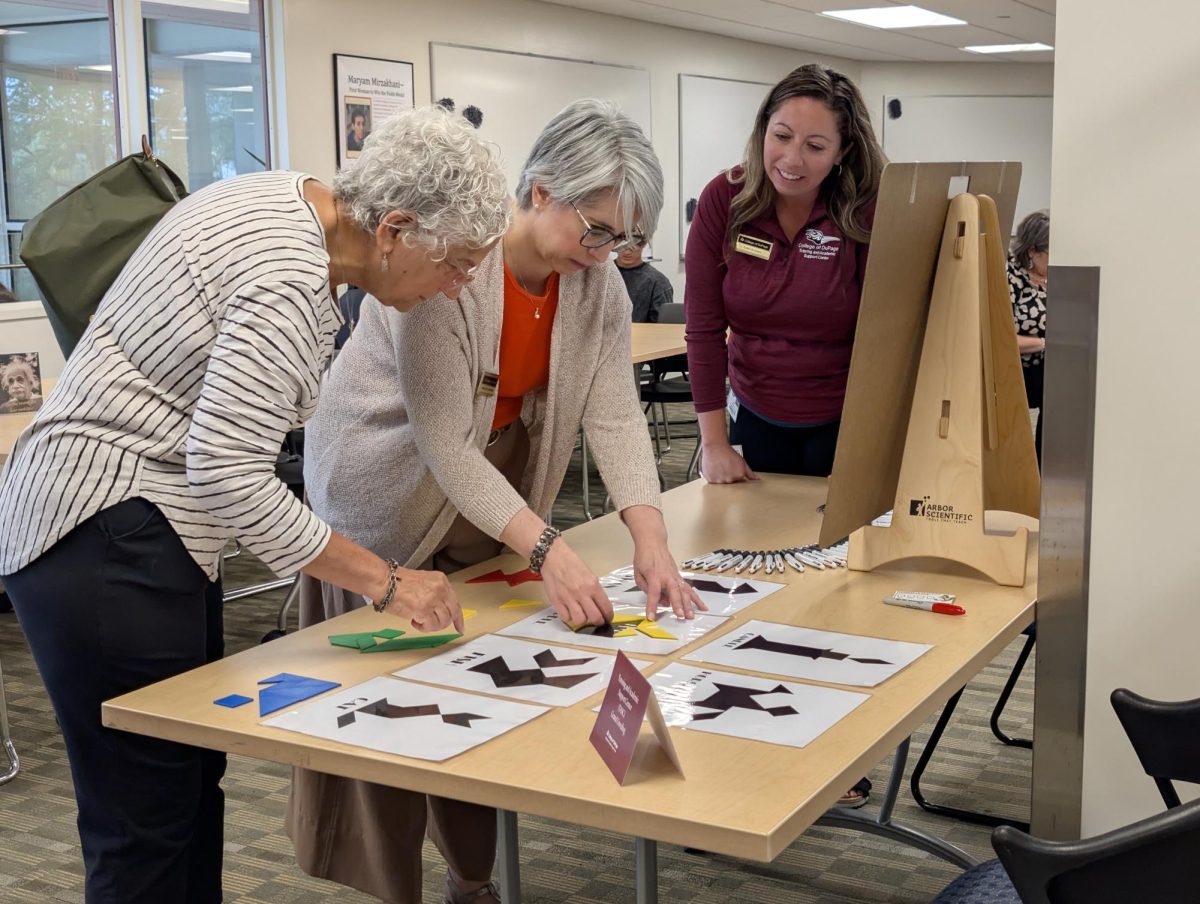Around 30% of food in the United States is wasted at the retail and consumer level, totaling approximately 35 million tons annually. Restaurants, grocery stores and catered events all contribute to this figure, discarding food due to nearing sell-by dates or overstocking. Food rescue programs, like the one run by the Fuel Pantry in partnership with COD’s cafeteria, Brew 425 and Einstein Bagels on campus, help address this issue.
According to Linda Kozlowski, advisor to COD’s Fuel Pantry, all pantries participate in food rescue and many large grocery chains and food manufacturers sponsor food rescue programs.
“Places like Trader Joe’s give a tremendous amount of food through pantries,” Kozlowski said. “It probably would be easier for them to just toss it, you know? But they make sure there’s someone there to pull the stock, and it ends up at People’s Resource Center.”
The reliance of food pantries on food rescues is substantial. Feeding America estimates that over 4.2 billion meals were provided through its network of food banks and pantries in 2020, with a considerable portion sourced from rescued food.
COD has a food rescue program that is making a difference in the lives of students facing food insecurity. Every week, a team from the Fuel Pantry swings by the campus concessions, including the cafeteria, Brew 425 and Einstein Bagels, to pick up good food that’s just past its sell-by date. These items include salads, sandwiches, pudding cups, parfaits, fruit cups and bagels; Most of which can still be safely eaten for a few days after. From those three locations, staff and volunteers, pick up these items in boxes and carts from stores and then take them to the pantry. Once there, the food is stored in the fridge to keep it fresh.
This whole process helps prevent waste and provides people with free, quality meals they might not afford otherwise, instead of being thrown away, as it was before Kolzwoski began the program back in May 2023 after receiving the all-clear from DuPage County’s health department.
“I talked to the health department, and they said, ‘Wow, food is good for a full five days past its sell-by date,’” she explained. “This was the health department, that is going to have the most conservative opinion on how fresh food is.”
Regarding the amount of food they are typically able to rescue, Kozlowski explains, that they are often able to fill “at least half of the big refrigeration unit if not the whole refrigeration unit,” in the Fuel Pantry.
Moreover, according to Kozlowski, the rescued fresh food is highly sought after by pantry clients. Mondays are particularly busy for the Fuel Pantry because their refrigerators are full of food rescue items they received towards the end of the week, as the cafeteria and campus restaurants prepared to close for the weekend. This influx attracts a large number of people looking for quick meals like packaged sandwiches or salads.
“It’s the items that really draw people in. That’s the stuff that goes quickly,” Kozlowski noted.
Kozlowski emphasized that this approach makes visiting the pantry more accessible for anyone needing assistance with meals for the week.
“The food rescue programs are also just a nice way to attract people that we can help,” she said “They get a sandwich for lunch or salad for lunch, then they can pick up food to make dinner. Almost anybody would feel comfortable doing that, and it’s just a nice segue into visiting the pantry.”
Employees directly involved in food rescue also expressed their appreciation for the program and its impact on both waste reduction and community support.
Hania Samed from Einstein Bagels said, “It’s great how we give away bagels that would’ve been thrown out. It helps cut down on waste and gets food to people who really need it.”
Eric McCarthy, an employee at Brew 425, added, “The Food Rescue program is awesome. It stops food from going to waste and helps people out. It’s simple but really amazing.”
Kozlowski herself even commented on the image she got of companies that participated in food rescue programs such as Trader Joe’s.
“I was at the People’s Resource Center for many years, and I would see the stuff that came in. It would make me want to shop at Trader Joe’s even more,” she said “It’s like, ‘Oh, you’re doing this? You’re helping people out.’”
Learn more about the Fuel Pantry’s programs, volunteer opportunities, and client registration process on the Fuel Pantry website.









